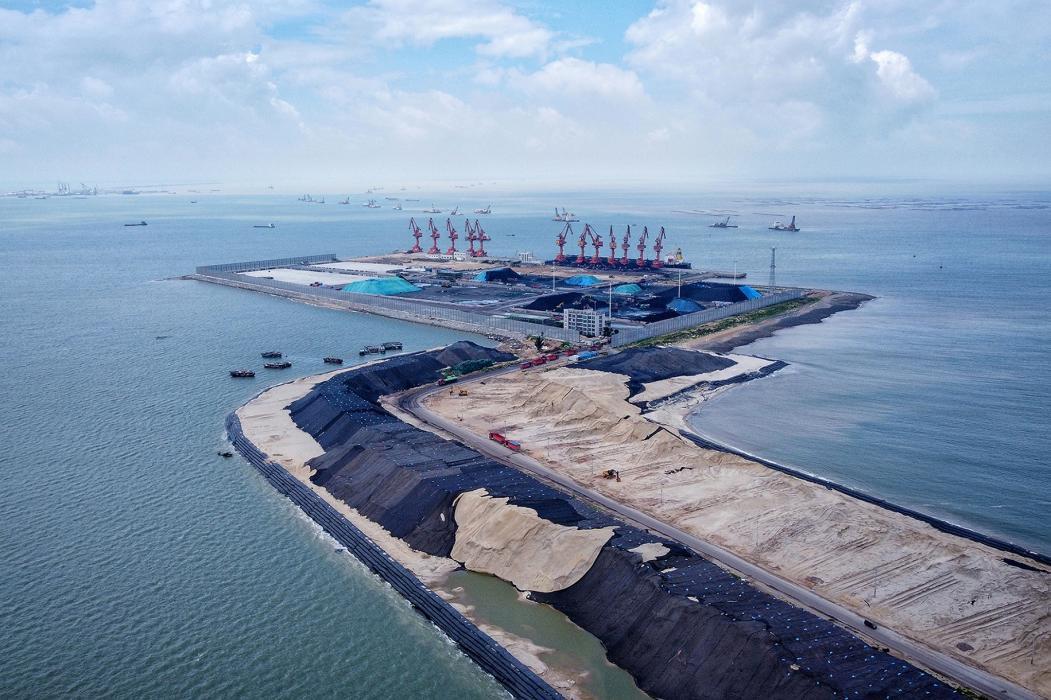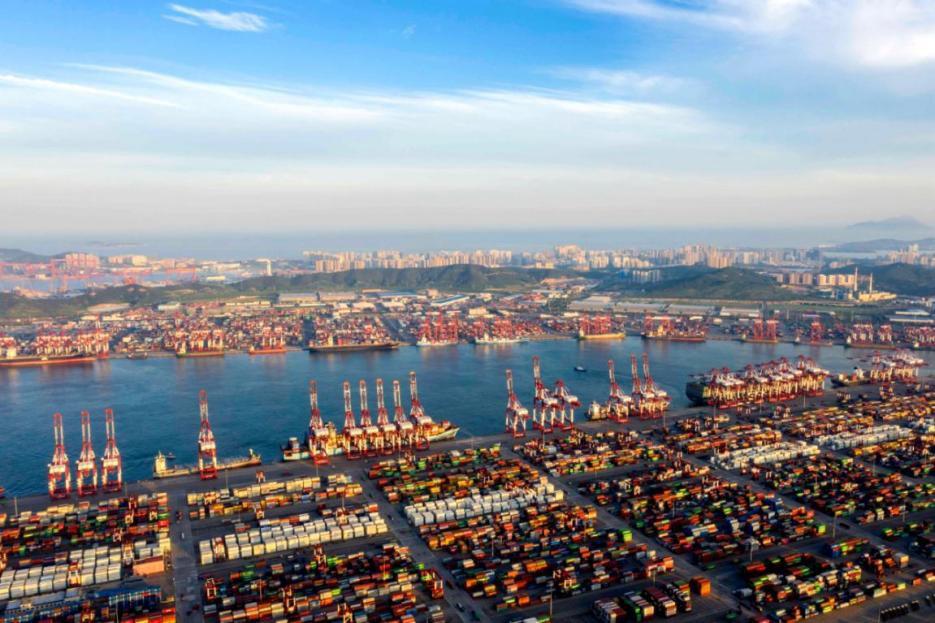
Photo taken on Jan. 6, 2021, shows tower cranes loading and unloading huge cargo vessels at an international container terminal of Yantian Port in Shenzhen city, south China’s Guangdong province. (Photo by Yu Xiangquan/People’s Daily Online)
Ports in China are witnessing increasing cargo throughput, broadening sea routes, and constantly improving the quality of foreign trade.
In the first half of this year, the cargo throughput of ports in China rose 9.2 percent year on year to nearly 2.36 billion tons, while their container throughput grew by 15 percent from the same period last year to about 138 million TEUs (Twenty-foot Equivalent Units).
By rolling out a series of measures to reduce costs and enhance efficiency, ports and customs in many Chinese cities have put shipping resources to better use and increased efficiency in foreign trade, providing support for continuous and steady growth in foreign trade.
Qingdao Qianwan Container Terminal Co., Ltd. (QQCT) based in Qingdao, east China’s Shandong province, launched a total of 15 new shipping routes during the first six months of this year, among which ten connect the city with countries and regions participating in the Regional Comprehensive Economic Partnership (RCEP) and the Belt and Road Initiative (BRI), Zhang Jun, deputy general manager of QQCT told People’s Daily.
This year, there has been a significant increase in the growth rate of the container throughput of Chinese ports, while the demand for container shipping services has been rising in the majority of ports, suggested the Outlook of Container Throughput at Global Top 20 Ports in 2021 report recently released by the Center for Forecasting Science under the Chinese Academy of Sciences (CAS).

Photo taken on June 13, 2021, shows the construction site of the eastern shipping route extension project at Qinzhou Port in south China’s Guangxi Zhuang autonomous region. The project aims to build a 100,000-ton two-way shipping route that stretches 23.34 kilometers at the port. (Photo by Chen Xuehua/People’s Daily Online)
According to a model-based prediction from the Center for Forecasting Science, nine of the top 20 container ports in the world will be from China, and the development of China’s container transport plays a major role in boosting and underpinning the overall stable development of the world.
On July 14, 130 containers containing home appliances including refrigerators and ovens were loaded onto a ship at a wharf in Shunde district, Foshan city, south China’s Guangdong province.
After customs clearance through an innovative customs clearance mode, these goods were transported to Nansha port in Guangzhou, capital of Guangdong, by inland river barge, and then, without going through customs procedures again at the Nansha port, carried to their destination country by an international container vessel.
The new customs clearance mode allows exports and imports to finish all customs clearance procedures at nearby inland river ports on Zhujiang River in Guangzhou and be directly transferred to seagoing vessels when they arrive at Nansha port, according to Liang Zhangcheng, an official of the customs at Nansha port.
The customs clearance mode enables imports and exports to be directly transferred at Nansha port and pass the port quickly 24/7 all year round without having to wait for a schedule at wharves, Liang said.
In order to simplify the procedures and shorten the time for customs clearance, some cities are actively optimizing the business environment of ports by exploring smart port construction.
In Qinzhou Port area of the Beibu Gulf Port in south China’s Guangxi Zhuang autonomous region, customs and port authority jointly launched a smart control system that helped realize information visualization at the container handling area. In addition, they have also promoted the implementation of reform measures including automatic entry of tally data to make it easier to transmit shipping bills.

Photo taken on July 24, 2021, shows the busy Qianwan Container Terminal in Qingdao, east China’s Shandong province. (Photo by Han Jiajun/People’s Daily Online)
The overall customs clearance time of imports at Qinzhou Port was 16.88 hours on average between January and June this year, 19.91 percent less than that of last year, according to Wang Xilong, chief of customs at Qinzhou Port.
At present, both the throughout and the fleet size of ports in China rank among the top in the world, making the country an influential major country in water transportation. The development of ports is crucial for giving play to the important role of sea transportation in foreign trade and stabilizing international logistics and supply-chain systems.
According to the National Comprehensive Three-dimensional Transportation Network Planning Outline jointly issued by the Central Committee of the Communist Party of China (CPC) and the State Council in February 2021, China will promote the construction of a number of international hub ports and national hub ports.
“In the future, we will earnestly put into practice arrangements and requirements set out in key guidelines including the Outline for Building a Transport-strong Nation and the National Comprehensive Three-dimensional Transportation Network Planning Outline so as to facilitate high-quality development of water transportation,” said Yi Jiyong, an official from the Water Transport Bureau under the Ministry of Transport.
Efforts will be made to speed up the construction of modern sea transport fleet, improve global sea transport service network, build up capacity for the transportation of key products, and enhance the resilience of container transportation, Yi said.
The country is also going to improve the comprehensive service capacity of ports, extend the industrial chain of port logistics, and promote integrated development of ports, industries, and cities, according to Yi.